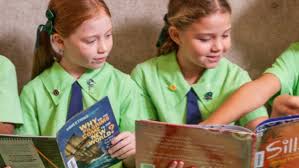Picture books hold a special place in early childhood education and development. They combine visual storytelling with simple text, making them ideal tools for nurturing young children’s language, literacy, and cognitive skills. According to the Australian Early Development Census, children who engage regularly with books and storytelling in their early years show significantly better language and communication skills upon entering school. This highlights the powerful role picture books play in preparing children for academic success.
Picture books are more than just colorful pages—they provide a multi-sensory experience that encourages children to explore stories through both images and words. This dual engagement helps develop vocabulary, comprehension, and listening skills. Young readers often begin their literary journey with picture books because the visuals help them understand the narrative and connect emotionally with the characters.
One of the key benefits of picture books is their ability to foster imagination and creativity. The illustrations invite children to visualize settings, imagine character emotions, and predict what might happen next. This imaginative exercise is critical for developing problem-solving skills and abstract thinking. Furthermore, picture books often introduce children to diverse cultures, ideas, and perspectives, promoting empathy and social understanding from an early age.
In addition to language and cognitive development, picture book support social-emotional learning. Many stories include themes such as friendship, kindness, sharing, and dealing with emotions. Children learn valuable life lessons through relatable characters and situations, which helps them navigate their own feelings and social interactions. For example, books that address feelings of anxiety or anger can provide children with language and strategies to express and manage their emotions.
Parents and educators can maximize the benefits of picture books by making reading interactive. Asking questions about the story, encouraging children to describe what they see in the illustrations, and connecting the story to real-life experiences enhances comprehension and engagement. Shared reading also strengthens the bond between adult and child, creating a positive and supportive learning environment.
The versatility of picture books makes them useful in a variety of settings—homes, preschools, libraries, and community centers. They are accessible to children at different stages of development and can be revisited many times, each reading revealing new insights and understandings. Classic titles alongside contemporary stories provide a rich tapestry of learning opportunities.
In conclusion, picture books are invaluable tools in early childhood development, helping children build foundational literacy, imagination, and social skills. Supported by data from the Australian Early Development Census showing the strong link between early reading experiences and language development, it is clear that encouraging regular interaction with picture books sets children up for success both academically and personally. Whether enjoyed during quiet moments at home or as part of classroom activities, picture books open doors to a lifelong love of reading and learning.

